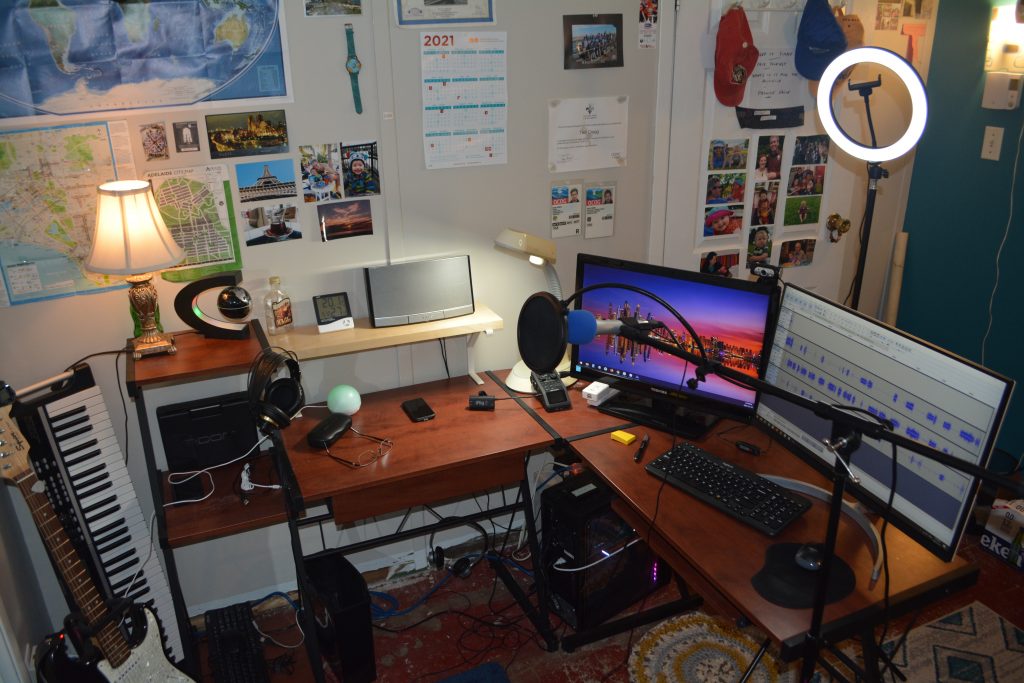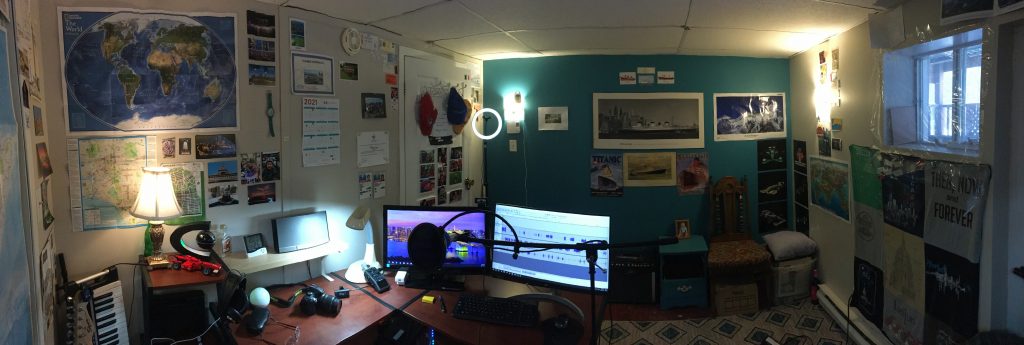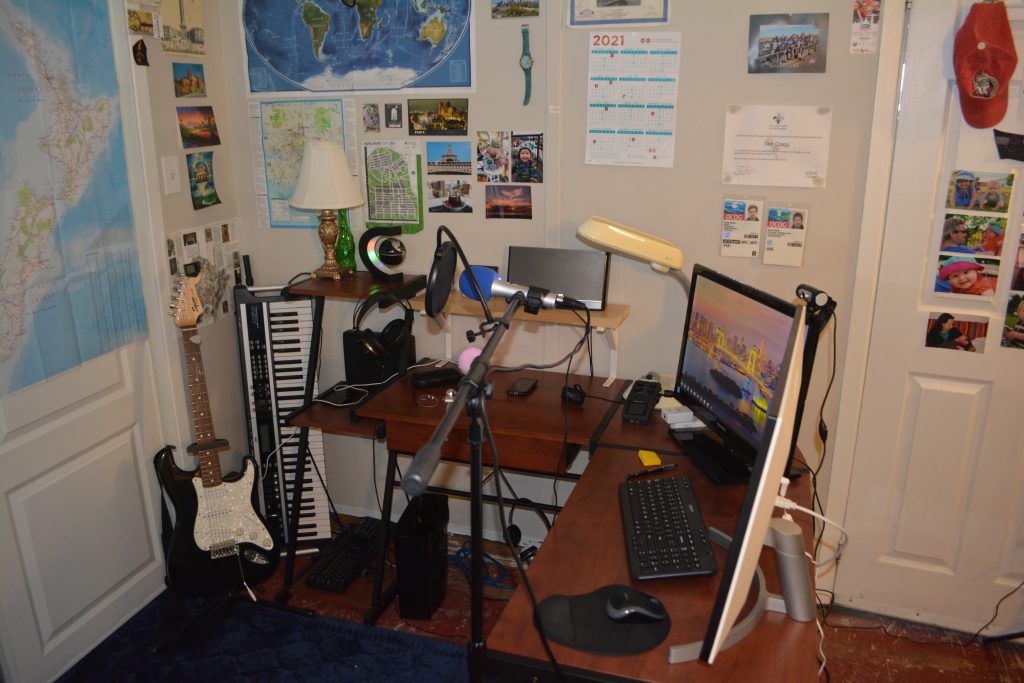
HERE ARE SOME OF THE GEAR AND PROGRAMS I USE TO MAKE MY GUESTS,
MY CLIENTS (AND MYSELF!) SOUND GREAT:
HARDWARE
- Audio-Technica ATR2100 dynamic USB/XLR microphone
A podcasting standard: versatile, sturdy and affordable. - Sure SM58 XLR dynamic microphone
These are the stage microphones you see in concerts everywhere. XLR only, but a solid, reliable sound. - Zoom H6 Handy Recorder
I splurged a couple years ago and bought myself an H6. These are mostly intended for remote, in-the-field recording (with multiple inputs at once), but I also use it for backing up my podcast recordings and as the primary input for recording music. - iRig 2 Instrument InterfaceWith the H6 now, I use the iRig less, but it’s slightly more portable, and most of all allows for connecting your guitar or keyboard into your iPhone.
- AKG K240 Studio Headphones
When I bought my piano keyboard back in 2007, I was ready to spend. Seeing as I was already buying a keyboard, amplifier, microphone, mic stand, patch cords and pedals, the guys said, “Well dude, you might as well get a nice set of headphones too.” The AKGs are studio quality, without a big studio price. - Lipety 10″ Light Ring
My latest addition, and yes this has much more to do with video than audio, but it adds a nice ambience to the studio and will come in handy when the time comes. - ASUS Strix Gaming PC (AMD Ryzen 5 3600X/1TB HDD/512GB SSD/16GB RAM/GeForce RTX 2060 SUPER
The big splurge last year. Time for an upgrade from my still-reliable but 4 year old ACER laptop. A nice desktop full of RAM and disc space, with a gaming graphics card, makes for some fast editing and, eventually, video! - LG monitor 27″
One of my best investments. Few additions are more practical and useful than having a 2nd monitor, no matter what your work is. In my case, great for editing on one screen and notes/files on the other. - Smart hack! Toshiba TV 21″ with HDMI input
My original setup after buying the new computer this past year, which is a tower and did not come with a monitor. We had a small 21″ flat screen tv, which although not HD quality works just fine as a monitor, now in tandem with the LG.

INSTRUMENTS
- Korg x50 Music Synthesizer
I had dreamed of having my own keyboard for years, and finally got one in the summer of 2007. It’s still going strong almost 14 years later. The x50 is designed for portability and can be adapted to MIDI programs and other software like GarageBand, not to mention the hundreds of built-in sounds. Great for writing podcast theme music! - Yamaha CP70b Electric Grand Piano
Fast forward 9 years, and now we had a house. Which meant I finally had space for a proper piano. Although I looked for a regular upright, I stumbled on the CP70 and realized it was the special piano I was looking for. This is a unique hybrid of real hammers and strings, with a soundboard and pickups inside that allow it to be easily amplified.
In the late 70’s/early 80’s, before portable synthesizers were developed, this was the touring musicians’ choice of piano, as it can be taken apart and moved around much easier than a grand piano!
The CP70 has a very unique sound. You’ll recognize it from such songs as “New Year’s Day” by U2 or “That’s All” by Genesis. - Fender Squire Jaguar Bass
I had always wanted to learn the bass, and felt a natural inclination for it. So I picked up a learners’ bass in 2013 and have been improving ever since. Stay tuned for a newer, upgraded version, hopefully before long!

SOFTWARE
- Reaper
Reaper is a powerful, customizable Digital Audio Workstation that gives you all kinds of options for both music and podcast editing. The best value DAW out there. - Audacity
I started audio editing with Audacity, as so many people do, and it still punches above its weight as a free, open-source program. It’s still the best way to get started recording and editing your podcast, before you’re ready to go to the next level. - Affinity Publisher, Design, Photo
For my design and photo editing needs I use the Affinity suite, the successor to the Serif publishing program I used to use to produce a campus newspaper back at university. Again it is a powerful, professional yet affordable alternative to many of the more famous programs out there. - TagScanner
I recommend tagging your podcast .mp3 file directly, instead of through your podcast host or otherwise. This makes sure the tags and cover art are consistent across any platform. TagScanner is a free program that allows you to easily fill in all the fields you need. - Total Recorder
As a backup recorder, in case of technical difficulties with Zoom or other programs, Total Recorder gives me a master file of the episode and fail-safe peace of mind.